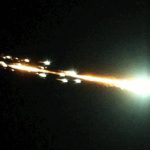Key Takeaways:
- Einstein’s theory of relativity predicts frame-dragging, where spinning bodies influence the fabric of space-time.
- Frame-dragging is usually minuscule, requiring advanced equipment to detect. However, unique stellar pairs offer natural laboratories for observation.
- The study focuses on PSR J1141-6545, a white dwarf and pulsar orbiting each other in less than 5 hours.
- Pulsars, made of densely packed neutrons, emit radio waves akin to a lighthouse beam, aiding precise mapping.
- The system’s formation involves the transfer of matter between stars, leading to the white dwarf’s rapid rotation and eventual pulsar creation.
Einstein’s general theory of relativity proposed an intriguing phenomenon: any spinning celestial body has the power to distort the very essence of space-time around it. This effect, known as “frame-dragging,” is imperceptible in everyday life due to its infinitesimal scale. Detecting it necessitates cutting-edge technology like the Gravity Probe B, a $750 million satellite capable of discerning minuscule angular shifts in gyroscopes over millennia.
Thankfully, the universe provides its own gravitational laboratories where scientists can witness Einstein’s predictions in vivid detail. The recent research, featured in Science, uncovered evidence of frame-dragging on a grander scale. Using a radio telescope, astronomers scrutinized a distinctive pair of stars locked in a high-speed cosmic waltz.
These stars’ movements would have puzzled Newtonian astronomers, as they traverse a space-time warped beyond classical explanation, demanding Einstein’s theory of relativity for elucidation. This theory forms the bedrock of contemporary gravitational understanding, detailing the precise movements of celestial bodies and even the passage of time. It also predicts that more massive, swiftly spinning objects exert a stronger frame-dragging effect.
A significant player in this phenomenon is the white dwarf—a remnant core of a deceased star, smaller than Earth but hundreds of thousands of times more massive. These can rotate astonishingly swiftly, completing revolutions in mere minutes compared to Earth’s daily rotation. The frame-dragging produced by such a white dwarf is approximately 100 million times more potent than Earth’s.
While visiting a white dwarf isn’t feasible, nature offers an alternative. Pulsars, stars made of densely packed neutrons, become invaluable tools for observation. In the case of PSR J1141-6545, a white dwarf (300,000 times Earth’s weight) and a radio pulsar (400,000 times the weight of a city) form an intriguing duo. This pulsar whirls around its axis an astounding 150 times per minute, creating a distinctive radio wave pattern observable from Earth.
This unique pair, PSR J1141-6545, emerges as an ideal gravitational laboratory. Though it resides several hundred quadrillion kilometers away, meticulous measurements reveal a wealth of Einsteinian gravitational effects. The system’s formation unfolds as pairs of stars are born, with the heftier one meeting its end first, giving rise to a white dwarf. The second star then transfers matter to its companion, setting off a process culminating in rapid rotation. In rare cases, the second star undergoes a supernova, birthing a pulsar. The swiftly rotating white dwarf influences space-time, causing the pulsar’s orbital plane to shift, a phenomenon meticulously mapped in this study.
Einstein’s skepticism about observing his space-time predictions has been challenged by recent advances in astrophysics. From detecting gravitational waves to capturing the silhouette of a black hole, billion-dollar facilities have revolutionized the field. However, the enduring relevance of venerable instruments like the Parkes radio telescope and the dedication of successive generations of graduate students underscore that there remains a place for patient exploration of general relativity.


